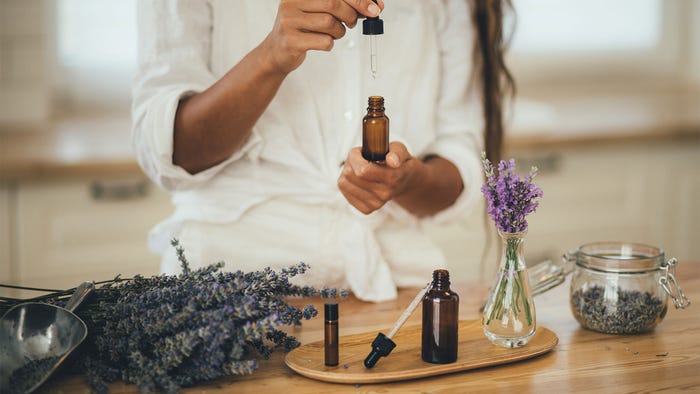
The popularity of lavender’s fresh scent has endured since ancient times. Cleopatra reportedly used it to seduce Julius Caesar and Mark Antony. By the 16th century, people were using it to ward off disease, preserve the dead and ease indigestion.
Today, lavender’s scent is promoted in many products — detergents, body soaps, balms, perfumes, toilet tissue and much more. It is also used in cooking and medicines.
“Lavender is more popular than ever,” says Kelly McGowan, a University of Missouri Extension horticulturist who led the study.
For Patrick Byers, MU Extension horticulturist, “Lavender provides many opportunities for those with small acreages.”
So, the two along with other researchers are studying how to successfully raise lavender in the state as a way to help growers and, ultimately, boost Missouri’s agricultural economy through agritourism and value-added products.
Best cultivar for the state
After three years of research, MU Extension horticulture specialists homed in on lavender production practices.
Because of Missouri’s diverse climate and topography, MU researchers planted test plots in four locations in the state.
McGowan used the Springfield Botanical Garden for plots. Horticulturists Katie Kammler and Donna Aufdenberg planted at the MU Extension Center in Ste. Genevieve. Byers planted at MU’s Southwest Research Center in Mount Vernon. Jennifer Schutter grew 22 cultivars and 120 plants over three years in northern Missouri at Kirksville.
In all, the group found that six main cultivars perform well in the Show-Me State:
Dutch mill
Grosso French
Munstead English
Hidcote English
Phenomenal
Provence
According to McGowan, Spanish varieties of lavender do not survive Missouri winters. In addition, some varieties cannot handle high humidity.
Tips for raising lavender
Like any crop, researchers found a few hiccups when growing the crop. Here are some tips:
Drainage matters. Regardless of location, this member of the mint family suffers when it receives too much water. MU researchers suggest growing it in raised rows and beds, containers, or high tunnels with good drainage and protection from excessive rainfall. A watering schedule that keeps plants on the dry side is also preferred.
Too cold for comfort. Plants need to be covered in colder climates such as in northern Missouri, Schutter says. During the study, she covered some rows and left others uncovered. Uncovered plants died or suffered dieback and needed severe pruning in spring. Protected plants survived, with the exception of one cultivar, Blue Spear, which is not recommended in northern Missouri.
Avoid a lawsuit. Plants are easy to propagate. However, some cultivars are trademark-protected, and propagation is prohibited. For questions, contact McGowan.
Plan for some failures. Kammler describes this perennial as “finicky.” Even within the same area, cultivars may respond differently. MU horticulturists say growers should plan for some failure — as much as 20% to 25% plant loss each season.
As with all crop production, test soil before planting and follow recommendations.
The Missouri Department of Agriculture provided funds for the research through a USDA Specialty Crop Block Grant. MU Extension plans to release a complete guide on lavender production this spring.
In the meantime, for more information on raising lavender, email McGowan at [email protected], Kammler at [email protected], Byers at [email protected], Schutter at [email protected] or Aufdenberg at [email protected].
Brief look at lavender
Here are a few facts about lavender:
Lavender plants grow about 1-2 feet tall.
Dense hairs coat the pale green leaves to give them their trademark silvery luster.
The light purple lavender flowers are tiny and arranged in spikes.
Every part of the plant contains the oil that produces a sweet fragrance.
“Fresh lavender plants will keep a garden fragrant, as well as attract a variety of pollinators like bees, butterflies, praying mantis and others,” Schutter says.
In addition to drawing pollinators, lavender can keep away unwanted insects such as fleas, flies and mosquitoes.
Geist is a senior strategic communications associate for MU Extension.
About the Author(s)
You May Also Like




